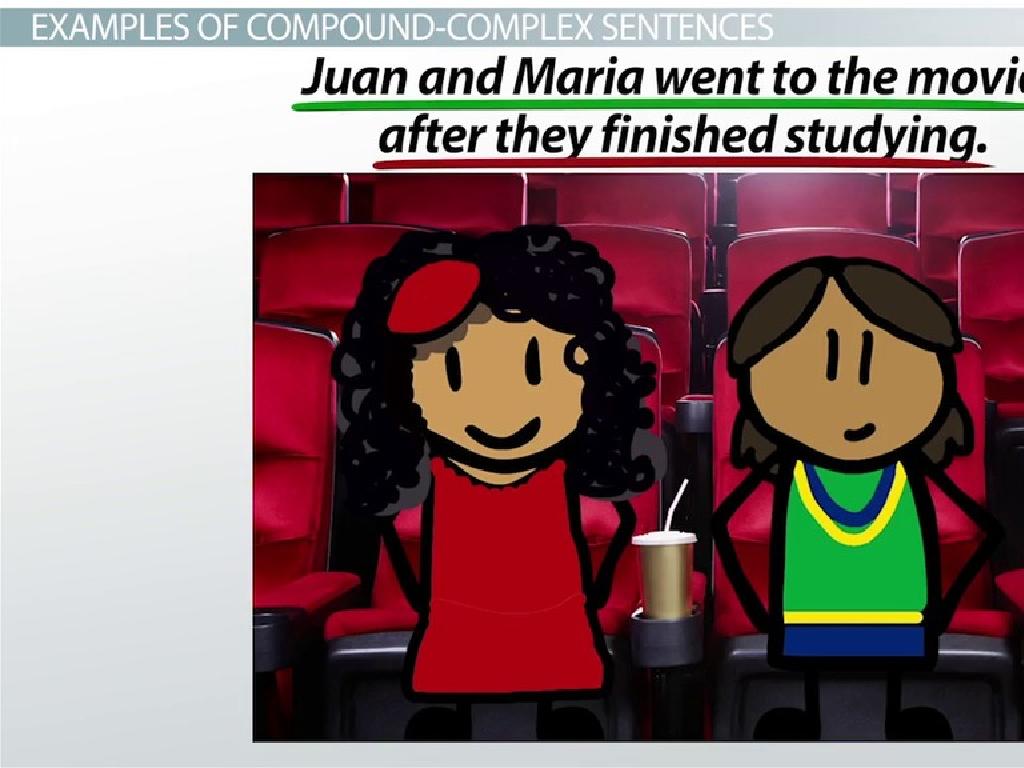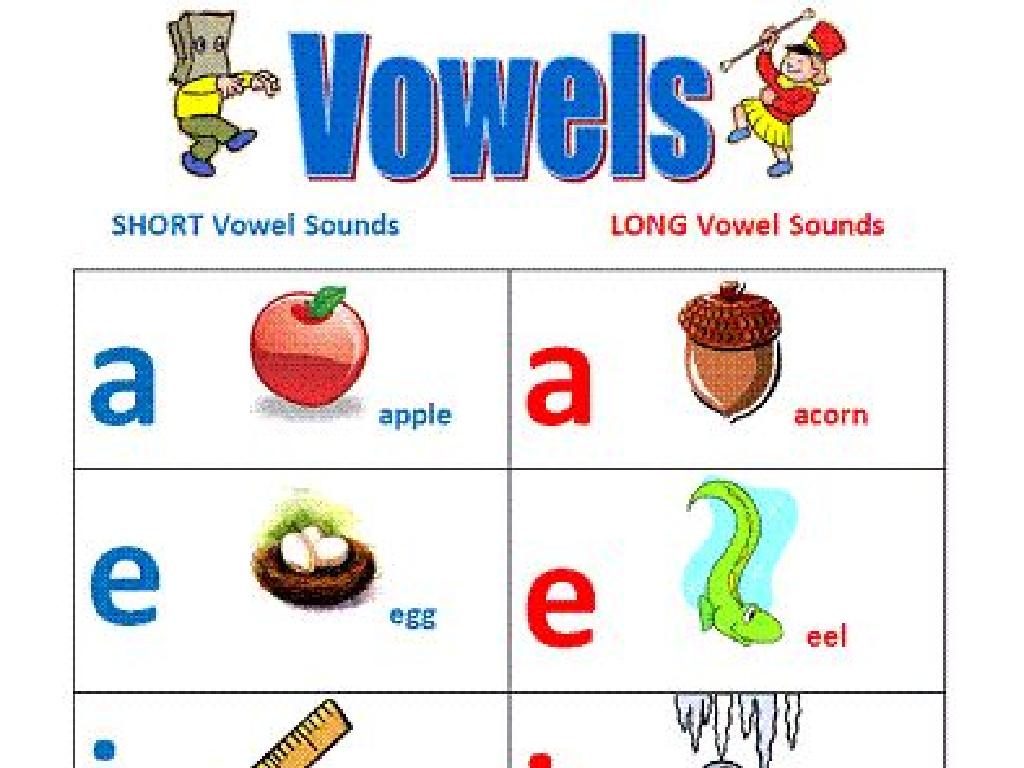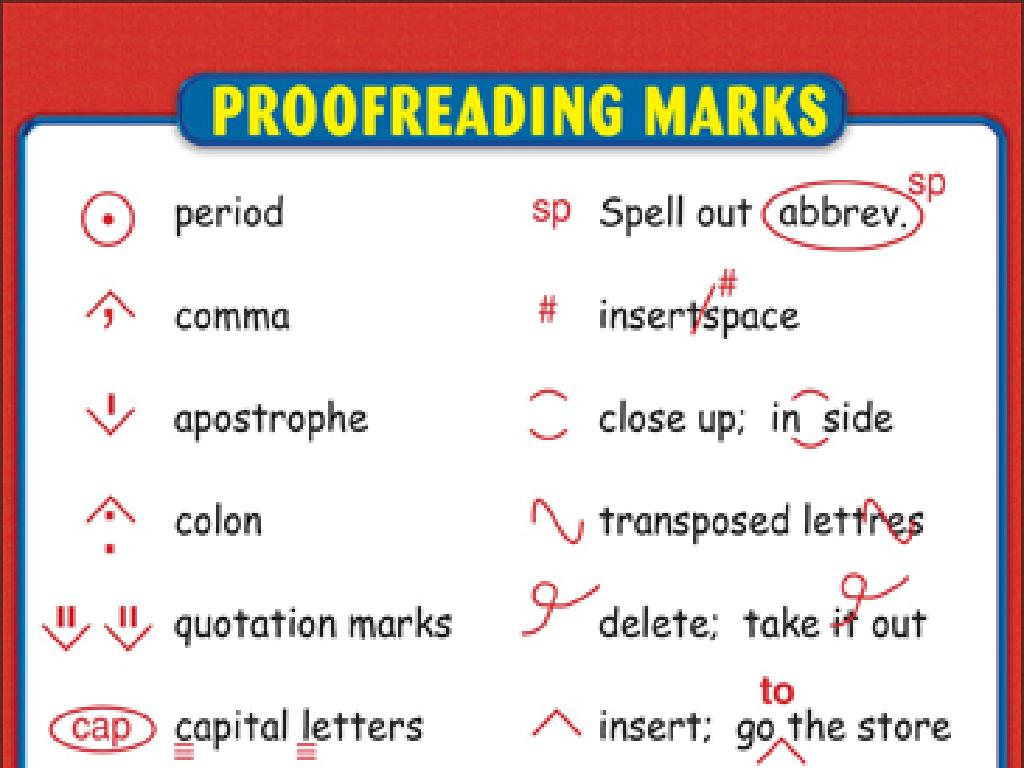Subtract Two-Digit Numbers Vertically
Subject: Math
Grade: Second grade
Topic: Subtraction: Two Digits
Please LOG IN to download the presentation. Access is available to registered users only.
View More Content
Welcome to Subtraction!
– Learn to subtract two-digit numbers
– Subtraction shows how many are left
– If you have 23 apples and give away 14, how many do you have left?
– Practice vertical subtraction method
– Write numbers under each other with tens and ones lined up
– Step-by-step subtraction
– We’ll subtract ones from ones and tens from tens
|
This slide introduces second graders to the concept of subtracting two-digit numbers. Begin by explaining that subtraction is a way to find out the number of items remaining after some are taken away. Use everyday examples to illustrate this point. Then, guide the students through the process of vertical subtraction, emphasizing the importance of aligning the tens and ones columns. Show them how to subtract the ones first, followed by the tens, and if necessary, how to borrow from the tens column. Provide step-by-step examples on the board and encourage students to follow along with their own paper and pencil. Prepare to offer additional practice problems for them to solve independently or in small groups.
Understanding Subtraction: Taking Away Cookies
– Subtraction means taking away
– Imagine 23 cookies in a jar
– Picture a jar with 23 delicious cookies
– If we eat 5 cookies, how many left?
– We take out 5, munch them, and count what’s left
– Let’s solve it step by step
– We’ll subtract 5 from 23 using vertical subtraction
|
This slide introduces the concept of subtraction to second graders in a fun and relatable way by comparing it to taking cookies away from a cookie jar. Start by explaining that subtraction is simply the process of taking some away from a larger group and finding out how many are left. Use the example of 23 cookies in a jar to create a visual image in the students’ minds. Ask them to imagine eating 5 cookies and then counting the remaining cookies in the jar. This will help them understand the concept of subtraction before moving on to the actual vertical subtraction method. The goal is to make the abstract concept of subtraction concrete and relatable. Encourage the students to visualize and solve the problem together as a class.
Subtraction Vocabulary
– Minuend: Starting number
– Think of it as the total cookies in a jar
– Subtrahend: Number taken away
– Like the cookies you eat from the jar
– Difference: What’s left after
– Cookies left in the jar after some are eaten
– Example with cookies
– If you have 10 cookies and eat 3, you have 7 left
|
This slide introduces the basic vocabulary of subtraction in a context familiar to second graders: cookies in a jar. Minuend is the total number of cookies we start with. Subtrahend is how many cookies are taken away, or eaten. The difference is the number of cookies left in the jar. Use an example with actual cookies if possible to visually demonstrate the concept. Ask students to imagine they have a jar of cookies and to visualize the subtraction process as they eat the cookies. This will help them understand the terms in a concrete way. Encourage them to come up with their own examples and share with the class.
Setting Up Subtraction Problems
– Write the bigger number on top
– Align the ones and tens places
– Ensure digits are directly one above the other
– Subtract ones place first
– If the top digit is smaller, we borrow from the tens
– Then subtract tens place
– After borrowing, subtract the tens column
|
This slide is aimed at teaching second graders how to set up a two-digit subtraction problem. Emphasize the importance of writing the larger number on top to avoid negative results. Stress the need for proper alignment of the ones and tens places, as this is crucial for accurate subtraction. Begin with subtracting the ones place, and if necessary, explain the concept of ‘borrowing’ or ‘regrouping’ from the tens place. After the ones are subtracted, move on to the tens place. Use examples like ’53 – 29′ to illustrate the process. Provide practice problems for students to try setting up and solving on their own.
Subtracting the Ones Place
– Start with the ones place
– Subtract bottom from top number
– Regroup if the top number is smaller
– Take a ‘ten’ from the tens place, add 10 to the top ones place number
– Practice with an example
– Example: 52 – 29, start with 2 – 9 in the ones place
|
This slide introduces students to the concept of subtracting two-digit numbers vertically, focusing on the ones place. Begin by explaining that subtraction starts from the rightmost digits, which are the ones. If the top number in the ones place is smaller than the bottom one, demonstrate how to ‘borrow’ or regroup by taking a ten from the tens place. Use a simple example like 52 – 29 to illustrate this: since 2 is smaller than 9 in the ones place, we regroup by taking a ten from the 5 in the tens place, making it 4 and turning the 2 into 12. Now, 12 – 9 is easier to subtract. Encourage students to practice this step with different numbers to become comfortable with the concept of regrouping.
Regrouping Tens into Ones
– Borrowing when not enough ones
– Turn one ten into 10 ones
If you have 1 ten, you can exchange it for 10 ones.
– Now subtract in the ones place
This lets you subtract smaller numbers from larger ones.
– Practice with examples
Try 52 – 29 by turning 1 ten into 10 ones.
|
This slide introduces the concept of regrouping, which is essential when subtracting two-digit numbers and the ones place digit of the subtrahend is larger than the ones place of the minuend. Explain that sometimes we need to ‘borrow’ from the tens place to have enough ones to subtract. Show how to cross out a ten and add ten ones, then proceed with the subtraction. Use clear examples on the board and provide practice problems for the students to try, such as 52 – 29, where they need to regroup. Encourage students to ask questions if they’re confused about when and how to regroup.
Subtracting the Tens Place
– Start with subtracting the ones
– Move to subtracting the tens
– Subtract bottom tens from top tens
– If you have 54 – 29, subtract 4 (ones) from 9 first
– Adjust if you regrouped
– If you borrowed from the tens, remember to subtract the extra one
|
This slide focuses on the step-by-step process of subtracting two-digit numbers vertically, specifically the tens place. Begin by ensuring students are comfortable with subtracting the ones place before moving on to the tens. Emphasize the importance of aligning the numbers by place value and subtracting the bottom number from the top number in the tens column. If regrouping (borrowing) was necessary in the ones place, remind students to subtract an additional one from the tens place. Use examples on the board and provide practice problems where students can apply these steps. Encourage students to talk through the process as they work through the problems to reinforce their understanding.
Let’s Practice Together: Subtracting Two-Digit Numbers
– Subtract 54 – 29 step by step
– Start with the ones: 4 – 9
– Since 4 is less than 9, we need to regroup
– Regroup: borrow from the tens
– Take 1 ten from 50, making it 40, and add 10 to 4, making it 14
– Now subtract the tens: 50 – 20
– After regrouping, subtract: 40 – 20 = 20
|
This slide is an interactive class activity where students will practice subtracting two-digit numbers with regrouping. Start by writing the problem 54 – 29 on the board and guide the students through each step. Explain the concept of regrouping when the top number in the ones place is smaller than the bottom number. Show them how to ‘borrow’ one ten to make the number larger. After regrouping, proceed to subtract the tens place. Encourage students to follow along with their own paper and pencil. Possible activities include pairing students to practice similar problems, using manipulatives to visualize regrouping, and creating a subtraction chart for reference.
Class Activity: Subtraction Race
– Receive your subtraction worksheet
– Solve the two-digit subtraction problems
– Stack numbers vertically and subtract bottom from top
– Check your answers carefully
– Remember to borrow if the top digit is smaller
– Let’s see who can solve them correctly!
|
This activity is designed to provide students with hands-on practice in subtracting two-digit numbers. Distribute the worksheets and explain that accuracy is more important than speed. Remind them to align the numbers correctly and to start subtracting from the rightmost digits. If they encounter a situation where the top digit is smaller than the bottom one, guide them through the borrowing process. After completion, review the answers as a class to reinforce the concept and address any common mistakes. Possible variations of the activity could include pairing students to work as a team, using manipulatives to visualize the subtraction process, or creating a subtraction ‘relay race’ where each student solves one problem before passing it on.
Conclusion: Mastering Subtraction
– Excellent work on two-digit subtraction!
– Align numbers and regroup when necessary
– Make sure the tens and ones are in the right columns
– Practice is key – continue at home
– Try more problems to get even better
– Review what we’ve learned
– Let’s go over the steps once more
|
As we wrap up today’s lesson on subtracting two-digit numbers, congratulate the students on their hard work. Emphasize the importance of lining up the numbers correctly by their place values and remind them of the regrouping technique when the numbers in the ones place are not sufficient to subtract. Encourage them to practice at home with different problems to reinforce their skills. Finally, do a quick review of the steps involved in vertical subtraction to ensure that everyone is clear on the process. Provide some additional example problems for them to solve as homework to further solidify their understanding.






